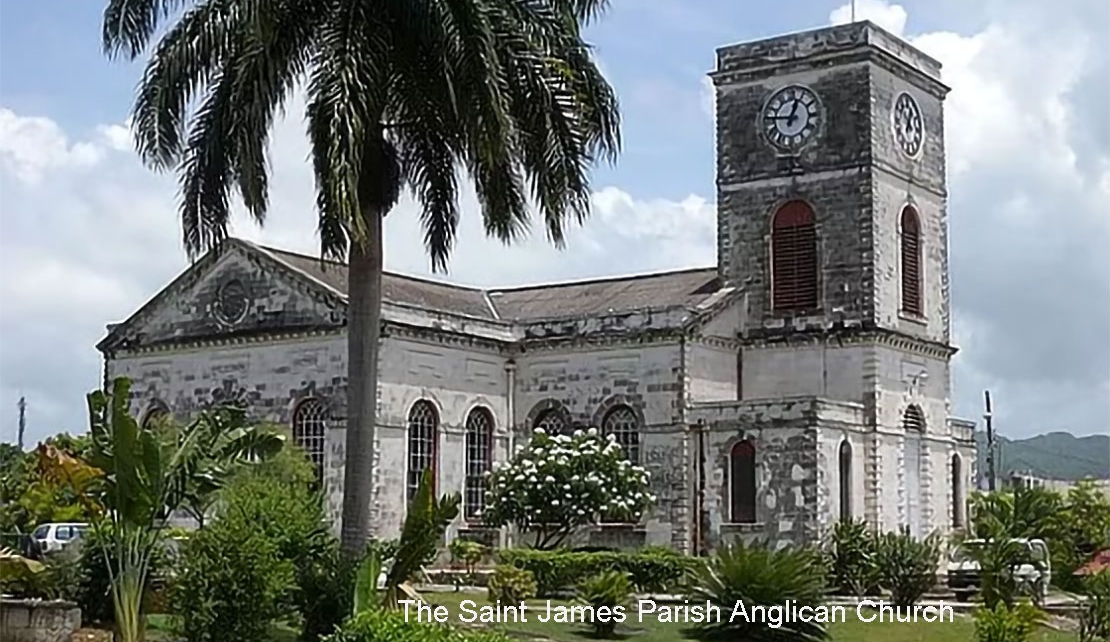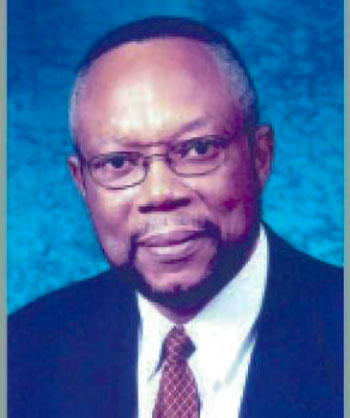JAMAICA | "We are miserable sons of Adam and Noah. We have sinned against God that is why we are in slavery"

THE activistic role of the Anglican Church, also referred to as the Church of England, as a socio-religious and political institution within the Jamaican society during the period of colonialism and slavery, in particular, has been well documented and hotly debated by scholars for decades.

In other words, for years the Baptists, Moravians, Methodists and Presbyterians — the earliest non-conformist religious groups operating here in Jamaica had to apply to the Anglican Church hierarchy, more specifically the vestry, a forerunner to the parish council, for a licence to preach the Christian message to the slave population and others.
It was because of this arrangement why black missionaries George Leile, Moses Baker, Thomas Swiggle, George Gibbs, et al, could no longer preach with the passage of the relevant law in 1802, and again another in 1810 with more teeth in response to the abolition of the slave trade in 1807.
This forced the black missionaries, particularly Baptists, to seek from the British Baptist Missionary Society white missionaries to come to Jamaica and help save the work started here 41 years earlier. The request was made by Moses Baker, who was broken-hearted at two levels, in that his son Joseph Baker whom Moses had sent to theological seminary in England, absconded. Additionally, for many years only the Anglican Church was financed by the Jamaican taxpayers through the Government.


This document produced by Mather in 1712 coincided with the period when a Jamaican Planter named Willy Lynch, delivered that famous speech at the club house along the Banks of the James River in the Colony of Virginia from which would flow both an entrenched psycho-social ascription and dynamic known as the 'Willy Lynch Syndrome” in the history and culture of especially the western world.
The horrible act of the mob burning alive and hanging of negro slaves, called “lynching,” derived its name from the surname of Willie Lynch. Another piece of literature authored by Willie Lynch in deliberate circulation throughout the various slave societies at the time was another document entitled “The Breaking of the Negro,” which equated the Negro in his raw and natural state to a wild beast (horse) which must be broken, to be made civilised by the conditioning of white European culture and values.
This was conveniently and selectively applied by manipulation of the physical and psychological differences among the slaves that Lynch advised to pit the slaves against one another in perpetual divisiveness and hatred as a method of control.
The planters church ...Anglicans and other denominations, to varying degrees where they felt obligated to a particular estate owner, would join the brainwashing caucus to keep the slaves happy in their oppression.
However, with the multiplicity of slave rebellions not only in Jamaica, but throughout the hemisphere, under various European colonial powers, it can hardly be said that our ancestors were seriously influenced by these gimmicks!
It is to be noted that significant and fundamental changes have come to the Anglican Church over time with some spiritual stalwarts providing leadership at various levels — clergy and laity — within the church community, as it evolved through its historical transformation which is nothing more than impressive.

Backra was white, but not always the estate owner. The owner was called Massa ... many of whom were absentee. Where Massa was resident on the plantation and played an active role in its management, then he would be called Backra Massa!
The slaves knew where ultimate secular power laid and understood this hierarchical social divisions all too well, as even in spiritual matters their reference to God was always “Massa God” not “Backra God”! Massa such as the Palmers, Lawrence, Irvings, Kerr Jarretts, Morris' and the Barretts of Cinnamon Hill, among others, would occupy the front row in the St James Parish Church, for example, and having the privilege of laying grave stones inside the church closest to the pulpit. They would have their dead buried in the church yard next to the buggy driveway and doorways.
Those of lesser economic means, but better off economically than the white white collar workers at the back row, sat in the middle pews at church.
So it begs the question, where would our ancestors — the slaves — sit, since even the back rows were for white people? They sat under the trees, on stones or on the ground, as there were really not at church ... they only brought Backra and Massa to church and needed to wait on them to operate the horse and buggy to take them back home.
It was not until 1815 that a law was passed for the Anglican Church to give religious instructions to the slaves and their children. In that law, it was stated that a suitable place 'other than the church' should be found to give religious instruction to the slave population.
Those slaves wishing to be baptised had to get permission from their owners, who would be required to pay a fee for the baptism of each slave. The price per head to baptise a slave ranged over time from one pound, thirteen shillings and four pence to two shillings and six pence.
By the time the price came down so cheap, the curates, rector and priests resorted to “baptism in bulk”, as each slave in the batch was simply asked his or her Christian name … then hurriedly baptised en masse and the monies per head collected.
The idea of the melanin- saturated negro slaves becoming whiter than snow, despite being instructed by the same church leadership to make earnest pleadings in song ”Lord wash me” and sharing the same Heaven by rubbing shoulders with their white owners, was never taken seriously by the priests. But the baptism fee was.
What a journey our people have travelled in this country and this city, Montego Bay, as we remain mindful that black people could not walk in the town after 6:00 pm and not be picked up by the police patrols and arrested as vagrants.

The history of ancient Israel we know very well by clutching on to our Bibles so that Jewish history has become our sacred scriptures, even with its myths and legends. And as a Christian I have absolutely no problem with this posture on our part.
But what do you know about the history of yourself and your own people, your own community, your own street? How will you know that what you are hearing and reading is largely foolishness … or credible and authentic… being presented by some pretenders masquerading as experts, and having more titles than a large crowd of land barons?
Do you remember Clinton V Black, whose real Italian name is Clinton Vane de Brosse with “Black” appended ... among others? Unfortunately, that is where the Jamaican “history” has been for decades. The exhortation to emancipate yourself from mental slavery… none but ourselves can free our mind, is apt for this our time. And, yes, for all times.

 En
En  Ar
Ar